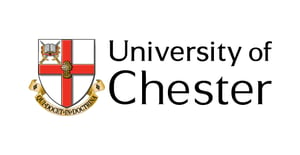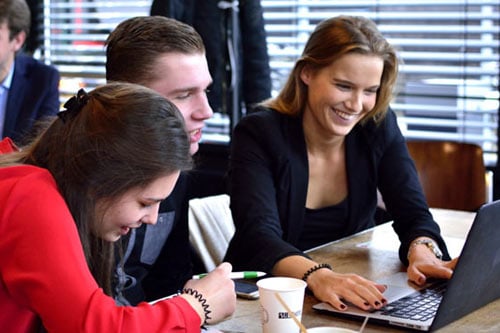This podcast episode addresses the fear of failure when learning as an adult and what can be done to create a safer environment for adults to reap the benefits of higher education. This is discussed through the prism of using business simulations for teaching business related subjects at university level.
Transcript
You're listening to the Edumundo podcast where we talk about all things to do with experiential learning, educational technology and gamification. In this podcast, we'll discuss themes in higher education, techniques to engage your students and utilise unique assessment approaches and everything in between.
Hello, it's George Sakoulas here and I'm going to be talking today about safe learning environments in higher education. I want to stress the higher education part here, but there's applications that go beyond that. We want as educators to be able to assess our students, it's part of the package. How do we create these experiential, engaging learning environments in a safe way that enables us also to continue to assess them in a fair way? I think back to the teaching standards when I was qualifying to become a teacher here in the UK, there's a very rigorous process that some of you might be familiar with that includes the seven teaching standards and a part two to it as well. Part of teaching standard number one talks about establishing a safe and stimulating environment. That entails creating an environment for pupils or students that is rooted in mutual respect and that the environment sets goals that stretch and challenge pupils of all backgrounds, abilities and dispositions and to consistently demonstrate as an educator the positive attitudes, values and behaviour which is expected of your pupils to, in a sense, practice what you preach. That all falls under the teaching standard one of "establishing a safe and stimulating environment." What a safe environment means, and I suppose what a stimulating environment means as well, varies across different stages of education in primary or lower school, secondary school or high school and sixth form colleges, universities at undergraduate degree, master's degree, mature students, it all means different things. The neurology of how we learn, what constitutes a stimulating environment, pedagogically speaking, is the same because we all have human brains, but the context of that changes and every age group or demographics definition of fun might vary slightly. These things are always in flux, why there is this human element of being an effective teacher and an effective educator. In this podcast, I'm going to be commenting on some clips. I'm going to be dropping in some clips from a webinar that we did with, well, about a year and a half ago with Dr. Keith Halcro from the Glasgow Caledonian University, a senior lecturer, and Alessandro Farazza from the University of Sutherland, both lecturers, professors, academics in business and business related subjects. They are both, at the time of recording the podcast, they were both using the same, sorry, the recording webinar, they were both using the same business simulation from Edumondo, but these are two academics with very different backgrounds and different teaching environments because they have different students in different universities. I'm going to be weaving in different comments from them during those webinars, during that webinar which was about experiential learning.
"I should flag up that actually my first degree was history and that was very didactic. I certainly find from my experiences, whilst my lecturers were good, it didn't really engage the students. I was slightly swayed to this idea already of trying to build in the students own experiences to their learning processes and success. As I said a few minutes ago, we're a post-92 university for those of you outside the UK. Post-92s are what used to be called polytechnics, very heavily vocationally orientated. The type of student that we recruit at the Class of Carolinian is they are working either currently part-time or have been working. Therefore for them to be able to apply learning tools that can draw on their own experiences is absolutely invaluable in helping them understand deeper theoretical concepts. The feedback we get from students is I now understand how theory and practice interrelate before we were tending to be taught simply at by the lecturer and that doesn't really help us to understand why we're learning. If we look at this idea of lifelong learning, as students will continue to learn through the next 50, 60 plus years of their life, it is important that we constantly try to root theoretical knowledge, I believe, within the paradigm of the individual's experiences. Our job is lecturers in the census, facilitators trying to help the students make that connection because once the student makes that connection, the learning is much deeper and they can then start to transport that knowledge to other settings."
Dr. Halcro there on his experience and his take on the social sciences. My take on it is that when you're teaching something, it's assessing. That's how you know if you've actually learned and if you've made any kind of progress. There's like an assessment spectrum depending on what it is that you're teaching and or learning which for me has used two examples, art on the one extreme and math on the other extreme, one being assessed almost entirely subjectively being the art and the other being assessed entirely objectively being the math.
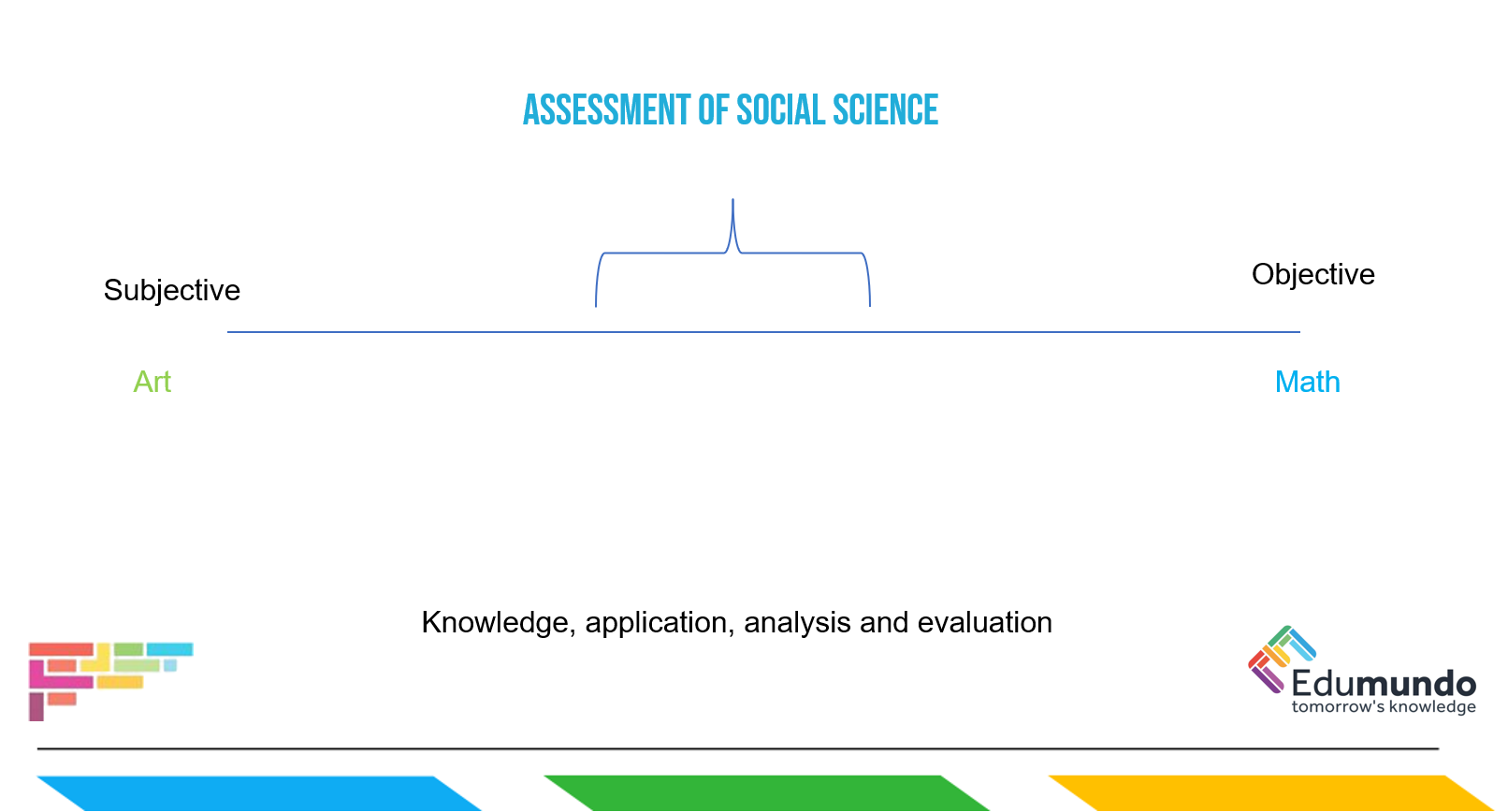
Then social sciences fall somewhere in the middle of the spectrum and history is one example business economics, psychology, all are assessed a little subjectively, a little objectively and we try to be as fair as possible by using the four pillars of recall of knowledge, application of said knowledge, then analysing with the knowledge that you've applied in order to arrive at some sort of conclusions or an evaluation of a decision that has been made or a behaviour or an event, be it history, psychology or economics or business. When we are talking about business, it's the decision of a business owner or a manager and how they've measured the outcome of that and how they react. Learning and execution is an iterative process, et cetera, et cetera.
"Your modern style of teaching is literally introducing flip classrooms and much more of a problem solving and peer learning which is very much based on personal experience and therefore this gamification does help incredibly in developing that in the students. I find personally that the use of these products not only helps the lecturer in facilitating the delivery of the theoretical elements of the module but also is for the students to put that into practice and how applying that theory to practice actually does create changes and those changes interact with the other teams and the other teams actually have to amend those strategies and that they have learned in the lessons. It makes the whole learning process very active and the feedback that I've had from students is amazing really."
Alessandro Farrazzo there, peer-to-peer learning. I think what peer-to-peer learning as an element in the learning environment, the classroom adds is a more social analysis and evaluation component to add to the knowledge acquisition which is a very personal and internal process. You personally have to recall the knowledge and you are attempting to apply it and then analysing with a peer and evaluation can happen individually or as part of a group as well. I think that's a big contributing factor to experiential learning environments. We are also very social creatures so how that is facilitated falls under the responsibility of the educator, the facilitator of creating a safe learning environment. For higher educators, what's starting to emerge here is a requirement so to speak of the job that is creating an environment where everybody feels safe enough to participate in a more social and interactive form of learning. Something for or against that, depending on how it's facilitated, is the major requirement of an educator which is to also provide assessment of the learning and assessment for the learning, how the students are performing. I think of it as spectrum of assessment where you have some bit of assessment on one extreme, very rigid let's say test condition, multiple choice test and then on the other extreme you have a more formative assessment which is an observation of a group of students interacting with each other over some sort of group task. Then there's different types of assessment, I guess I would argue that you could place somewhere on that axis against another axis, the vertical one where you have high stakes and low stakes which is given the assessment, what are you going to use the outcome of that assessment for as an educator, as a facilitator? Are you going to use that to give them their final grade for the module or is it just going to inform how you're going to engage with them in the next round, in the next lesson? That is pitching the higher to lower stakes of assessment. That is another part of the individual, which is another adaptive part of your teaching that you have to adapt to on a cohort by cohort, module by module or even case by case basis if we really want to get for individualized teaching and learning experiences. In this next clip Dr. Halcro is going to talk a little bit about his experiences and make reference to an interesting piece of research that I'm going to touch on later, let's listen in.
"Yeah, I mean certainly as you look at work, there's a lot about this idea of community practice, particularly for people that have been engaged or are currently working. I use it a lot with professional doctorate students, but I would argue it resonates for anyone in higher education and can actually work down into the colleges as well and maybe even six years of school. The advocates of the flipped classroom have suggested that this will encourage more engagement and ultimately lead to greater ownership of the individual's own learning. And if you feel you've got ownership of your learning, you will tend to do a better job at it. So there is certainly the last 12, 18 months has encouraged this idea of using the time that we have with students to try and get them to engage in higher level competencies and encouraging the student instead to focus on pre-reading so that when they come into the computer simulation classes, they can demonstrate that knowledge and they can therefore constructively question the tutor what is going on and why it's going on, both in order to demonstrate their understanding, but also to help illustrate the tutor gaps in their knowledge."
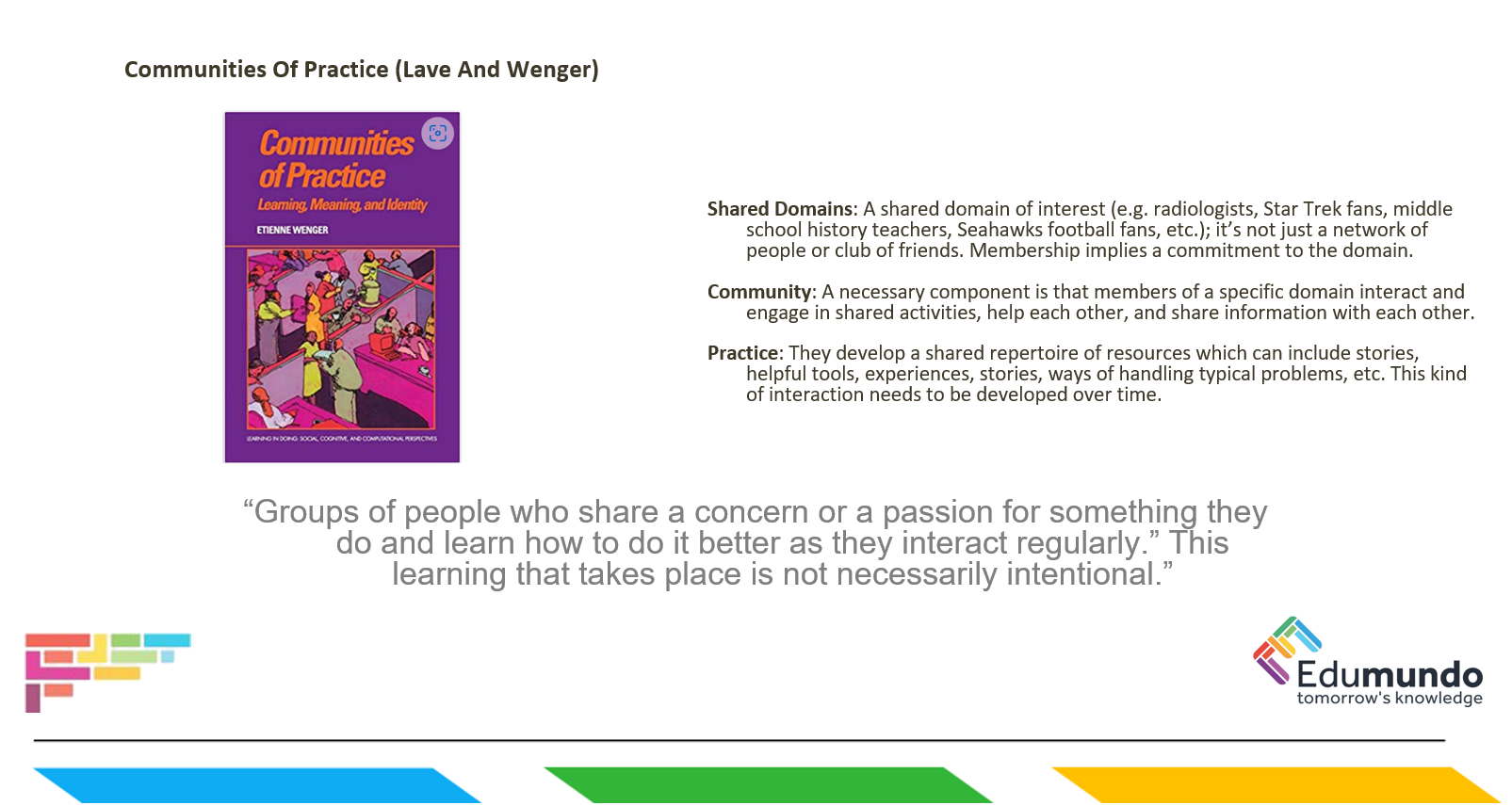
Dr. Halcro is referring to research by Lave and Wegner into communities of practice where they make the argument that to create a community, a learning community, so to speak, you have to have three elements, shared domain, which means that the participants or the population, if you will, of this community have a shared domain of interest and that they are sharing this domain to interact and engage with shared activities as part of a community to help each other out, share information. And then that over time, they develop a shared repertoire of resources through practice that includes stories, ways that they handle typical problems, and this kind of interaction needs to be developed over time when they're calling that practice. So shared domains, community, practice, the three elements of kind of creating a safe and engaging and stimulating learning environment that is very human way of learning because of this, because we are community creatures, we're social creatures. In this next clip, Alessandro is going to really highlight this point of how in the case of the business simulations that are being used here, the game itself becomes this virtual world with becomes a shared domain.
And within it, you have the groups competing with each other in this virtual marketplace and that fosters sort of a kind of community element within them. And then round by round, as they execute, as they work their way through the game, they're practicing and developing a shared repertoire of resources. Ideally, those resources are underpinned by the theory that is being taught and even better if that their skill with that repertoire is being captured in some sort of form of assessment.
"It was only last week in one of my last lectures before the summer recess that one of the students asked me during the lecture, would you want me to, I'm a HR manager can I take some of the delivery of the lecture for the next week? So we organized that and that created a completely new level of learning for the students because they were learning from someone who is a peer to them, but also a professional in their field and that created a whole host of conversations and discussions beyond that, which was great to see, but also it was a new experience for the students themselves and it worked really, really well. And I think that is going to be the future. I find it quite enlightening, but also easier for me with post-graduates because most of my students are professionals in business. So in their fields, they can bring that experience into the classroom and that is inevitably a very, very valuable tool. Sometimes I get them to also do a publicity stunt for their organizations and one team in particular actually involved the whole of their family and they created a film. They've uploaded the film and it was amazing to see how engaged they become as students, even though it's all done online. And so by doing that, I create them, I create a rivalry between the teams that keeps them fuelled throughout the module. I do have some of the games being played at weekends and I know that we say that we lecture from Monday to Friday and blah, blah, but I actually log in on weekends and do help the students. I mean, not that it does it, don't have to do it, but the see that I am involved with them and that gives them additional inspiration to complete that module in a more successful manner. And through this, with the support of the game, I've noticed that comparing it to past outcomes of this module, not only the submission has increased, but also the final results have improved greatly. So those are great examples of how the educational experience is enabled by this community of learning. Students that are getting their families involved, they're bringing in their personal life experiences involved, and you even see the educator becoming involved. So, the line between student and teacher becomes blurred as it all kind of blends together into an environment of co-learning. There’s also reference to the performance, right? The grades at the end, the assessment."
And I want to tie that in.
The fear of failure is the scariest part of a higher education learning environment. Not so much the paper airplanes or the bullying that happens in lower schools, in lower schools, secondary school, et cetera. So I think the most important element of creating a safe environment so that all of this great engagement and stimulation can happen is to make it safe for students to fail. And that's where the assessment map comes into play, how and when you as an educator weave in the assessments to the experience, in this case of the business simulation, is going to throttle the fear of failure. I’m going to read some quotes that kind of hopefully will highlight what I'm trying to say here, which is one from Winston Churchill. Success is stumbling from failure to failure with no loss of enthusiasm. Another one by Abraham Lincoln. My great concern is not whether you have failed, but whether you are content with your failure. One by Robert T. Kiyosaki, an American entrepreneur, where he says, winners are not afraid of losing, but losers are. Failure is part of the process of success. People who avoid failure also avoid success. And one last one from Janet Finch, sorry, Fitch, who is a professor in CBE for social sciences. And she simply states, the phoenix must burn to emerge. The common theme across all of these, and I think the important element of how to regulate the fear of failure through how high or low the stakes of assessment are in this learning environment, engaging and stimulating learning environment, the safety of it is down to how content or discontent your students are with their own failures, however small or large they are. And to ensure that they don't lose enthusiasm for what they're doing because of the failure. And every teacher will have different tools in their toolkits to facilitate that. The game supports the engagement from all parties.
"So, if there is a member of the team, which would normally, you know, a student that would normally sit in the background and sort of see the lectures and the workshops and the seminars go past them, actually they get drawn into this by their peers and their peers actually try and force them to become more active and participative to the game itself. So, it works in that respect as well. I think it's important that if you're using simulation games that you have to set the scene, you have to explain to the students why you're using the simulation games and the benefits that will accrue to the students. So, it's arguing about the pluses that come from this and a sense of firstly that students will be able to take their own experiences and apply it to the game. So, one of the things, for example, in the game that we use, the phone ventures, there are hints, ideas about how can you encourage more motivated staff. Sometimes you try and encourage the students to think about their own working experiences, employers that they've enjoyed working for, or maybe employers they've not enjoyed working for because sometimes the most powerful learning comes from your own failures, your own problems and try and relate that to the game. So, it's very useful getting the students to think about their experiences and telling them not only their own individual experiences, but also hearing the experiences of others will allow them to engage more fully. So, it's about making clear to students the value to be gained from simulation. It’s a, if you like, a safe house in which they can start to replicate some of their own previous experiences and apply them. But it's also about highlighting to the students the knowledge that can be gained from their team members and helping them at that moment in time, but also in their lifelong learning. This is free learning you're getting from your peers. It costs you nothing. Take advantage of your fellow teammates in the nicest possible way, because if you like, in life a lot of it's you scratch my back and I'll scratch your back. And this is a wonderful way of demonstrating it."
So that's a really nice way of putting it from Keith that a safe house to replicate some of the students own previous experiences and apply them, bringing their own experiences into the community and using that to facilitate their own and other people's learning.
One last thing, well, two more things that I want to talk about as we're getting close to the end here is what all this kind of boils down to the essence of the careful balancing act of fun versus assessment. How do you make assessment fun? And the foundation of that is creating a safe environment. What underpins a safe environment is this common domain community and then through practice building confidence, which contributes towards the positive effects of failure in terms of learning and making all this fun while doing your due diligence in terms of assessment.
"Well, some of the things I've noticed was coming away from the classroom style of teaching to the sort of either environment was the fact that students tend to kind of sometimes lose a little bit of focus. So, I wanted to ensure that my students were always engaged in this relation. And to do that, I gave them an opportunity of earning extra points during each week. And so, I give them a specific task to achieve and I put so many points available to them. With that in mind, I try and stimulate the creativity. And sometimes I get them to do news articles to introduce into the business so that the other teams can see that there is a new product coming from them. It could be a marketing element. It could be something that could be threatening to the other organizations because they come out with a new product for their organization. So that will create the creativity."
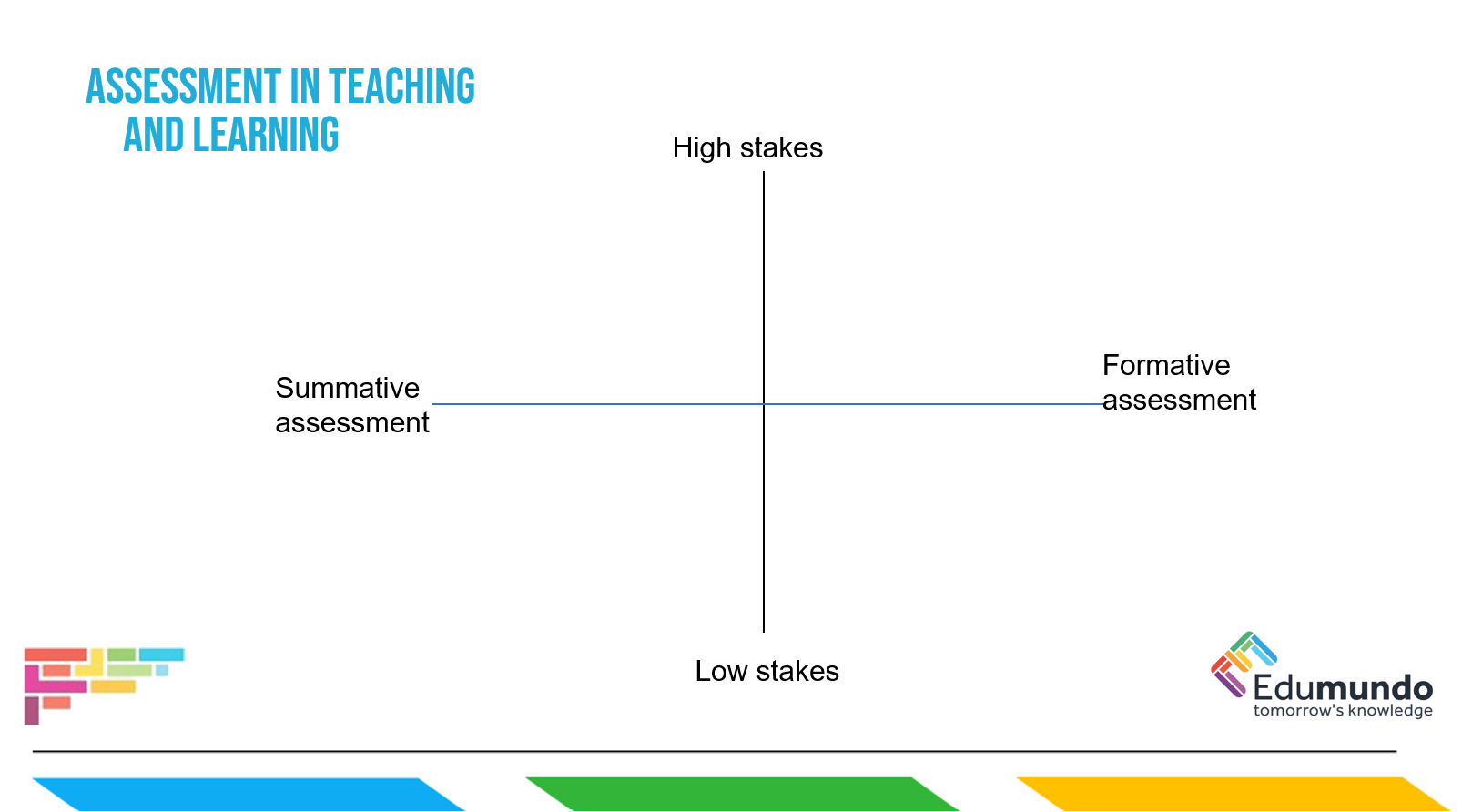
I hope you guys will be able to see or place, somewhere on this assessment map that I’ve been talking about, in terms of how they are gauging the stakes from low to high and what they are, how they are aware on the summative to formative assessment. They are placing the different sort of assessment touch points throughout the game. University of Sutherland, Sutherland have, they talk about, you'll see the reflective account of each individual's participation and how the ranking, whether they came first, second or third in the game is not assessed per se, but the evaluation of their own performance based on how they're applying knowledge to the situation and how that change is round by round is. That they have to, they're asked to analyse the changes in their ranking from round to round referencing their own decision-making processes behind their actions in each round. Change echoes kind of the more, it echoes the traditional methods of assessment that I talked about at the start with knowledge, application, analysis and evaluation.
It's all still there. And then you'll also hear from the Glasgow Caledonian University where they have a split the stakes between a group and individual assessment similarly and then placing different weightings on the rankings to increase engagement.
But I think it's also throttling that summative formative high stakes, low stakes form of assessment. Before I let you guys listen to that and let you go, I just wanted to also add that what this is all kind of stressing, I think, is how technology is an enabler in the classroom and it's a tool in a teacher's toolkit because the environment has to be, it will always be changing when we're talking about human beings, social animals learning and the teacher as a facilitator creating that environment and assessing the performance of its participants in said environment is something that is going to require an adaptive mind.
"The actual ranking has no relevance to the assessment criteria at all. The assessment is based on a reflective account of their participation to the module, their leadership learning, the management style, the decision making, making reference to how they supported the rest of the team in achieving a good sort of decision making process, how these have created opportunities for their organization but has no relevance to the actual ranking of the team.
I have found that even though the students know very well how they are being assessed from week one, it still motivates them to try and achieve more during the game itself. Some of the assessment criteria is try and through the learning, how the theory can be applied to practice. That’s what I want to see in the assessment when they prepare in the final assessment for the module. I can see how they become very precise on the application of the theory when they actually have to explain how they created that decision, what model of decision making they've used to achieve that final decision for the team. That is very useful and very creative from their part of view as well. We do give a small waiting. We made a conscious decision at the very beginning to award a certain amount of marks to the team's performance in the ranking. We felt that that would help to keep the teams engaged right through to the end. We certainly find that even if we didn't put the waiting in as part of the assessment, the best students would still be very competitive.
We do find a high degree of competitiveness coming out in many teams. We use two assessments. We have a team assessment with 50% and we have an individual assessment worth 50%.Of the team assessment, 15% of that relates to the ranking performance.
We find that, as I said, helps to keep students engaged. We also find that some kind of tumorous competitiveness is coming through. We hear students trying to bribe and blackmail their friends to give them information about what their teams are doing. There was one student a couple of years ago who told me that that used to be one of their big conversations with his girlfriend because she was in another team, trying to pump out for information what their team was doing because their team was consistently beating his team and he suspected that she was giving him tough information. In a way, it was humorous, but I suppose it relates to some of the practices that grow on the real world. We do use our relationships to try and find out what activities our competitors are doing.
Sometimes our competitors are very honest and tell us the truth. Sometimes our competitors feed us false information. We certainly find that having the team element and an individual element as the assessment is very conducive to the learning because the team element encourages shared knowledge, but the individual element allows the student to reflect on the strategy that the team has pursued on the team's creation and on their own individual development as a learner. I think that's important. If we go back to this idea of experiential learning, it's not simply getting people to relate their experiences and how they relate to the knowledge the tutor or the lecturer is giving them, but it's reflecting on what it really means to them and whether it's good or bad or relevant knowledge to the individual student.
So, I think the assessment mix that we have worked on has allowed marks to be driven higher, intriguingly. And I maybe echo something that Alex said a few minutes ago. We can statistically show that having used simulation games, that we have on average lifted marks about one mark a year for the last four years. So in itself, it doesn't sound very much going from say a 55 to 56, but cumulatively, we have now statistically shown that over the period of the last four years, the students who historically were getting 55 are now getting 60 on their team report. And that's important to students because no matter how much we stress the importance of learning to students who are 18, 20, 25, 30, whatever, students are also driven by what is ultimately their classification grades or their overall average. And this is important to demonstrate to students one of the advantages of a simulation game is it does seem to lead to better results. As I said earlier, if we're expecting our students to be lifelong learners with what we’re trying to teach them, if we're trying to take advantage of the experience that people have throughout their lives, which we are all lifelong learners, then as practitioners, as educators, we have to practice what we are preaching. We ourselves have to be lifelong learners and we ourselves have to adapt to our teaching environments as teachers."
I hope you enjoyed the podcast and see you next time when I'll be talking about gamification of courses and modularization versus cross-curricular and cross-modular education.
See you soon.
Bye bye.
If you'd like to learn more about Edumundo products and services, visit our website at
edumundo.com, follow us on LinkedIn or check out our YouTube channel.
Check the footnotes in this podcast for links to resources as well as how to get in touch.
We hope you've enjoyed this podcast and be sure to check back soon for the next episode.

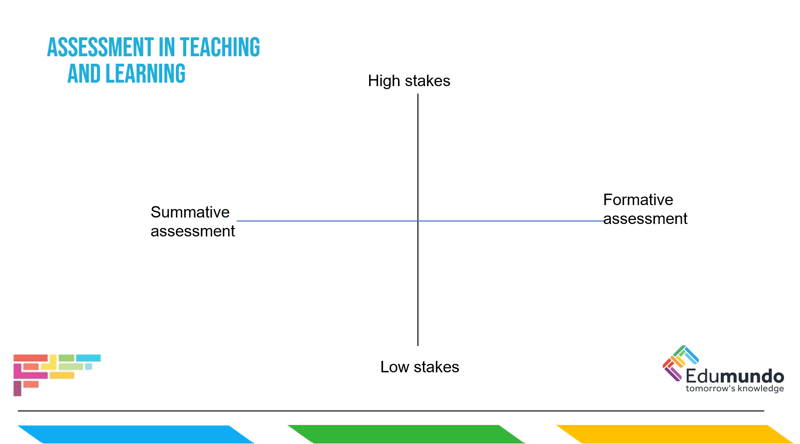
.png?length=300&name=unnamed%20(11).png)
.png?length=300&name=unnamed%20(7).png)
.png?length=300&name=unnamed%20(8).png)
.png?length=300&name=unnamed%20(6).png)

.png?length=300&name=unnamed%20(10).png)
.png?length=300&name=unnamed%20(5).png)
.png?length=300&name=unnamed%20(9).png)
.png?length=300&name=unnamed%20(4).png)
.png?length=300&name=unnamed%20(2).png)
.png?length=300&name=unnamed%20(1).png)
.png?length=300&name=unnamed%20(3).png)
.jpg?length=300&name=unnamed%20(2).jpg)





.png?length=300&name=loughborough-university-logo%20(small).png)

